|
| |
Order
Orthoptera, Suborder Ensifera
- This page contains pictures and information about Crickets and
Katydids that we found in the Brisbane area, Queensland, Australia.
-
 -
- Crickets and katydids are in insect Order Orthoptera,
Suborder Ensifera. They are among the most commonly seen insects. Their size ranges from 5mm to 100mm.
They usually have very long hair-like antenna, usually longer than
their body length.
Most of them have the hind
legs highly developed, much stronger and larger than the front two pairs of legs.
They are good in jumping.
-
- Please
check this page for more information about
Crickets and Katydids Biology.
Classification :
- In the Orthoptera Order, the are two suborder: the Suborder Ensifera (Crickets and
Katydids) and Suborder Caelifera (Grasshoppers), each of which contains a numbers of families. Followings
are the list of Ensifera families that we found up to this moment.
-
-
Suborder Ensifera
- Members in this Suborder have very long antennae, some may be several times of their body length. The auditory organs
located on the fore legs. Their
stridulation are produced by the mechanisms on the base of their
forewings. The females usually have long ovipositors extended from the end
of their abdomen.
-
- Family GRYLLACRIDIDAE -
Raspy Crickets
Members in this family, including nymphs and females, will produce a
raspy sound when disturbed. They are active at night. They usually spend the
daytime in burrows or in leaves shelters.

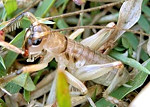



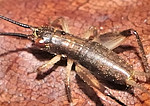 -
- Family TETTIGONIIDAE - Katydids
- In this family, nymphs are usually resemble ants or bugs. Females have sword-like ovipositor and
lay eggs by inserted them into leaf. Males produce love songs by file on
the left wing and scraper on the right. Most of them are tree foliage feeders. A few of them are predaceous species.
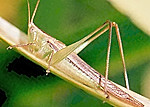 
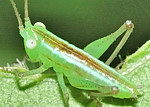 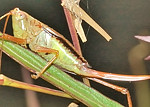
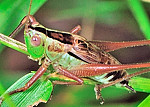
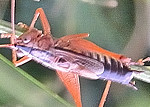 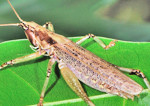
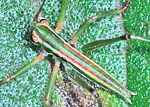

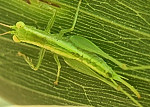
 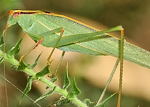
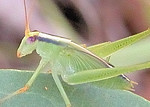
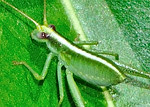

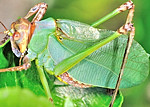
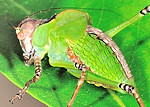

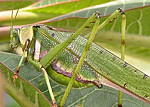
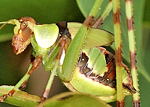

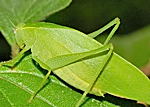

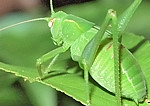
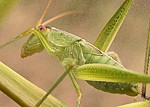
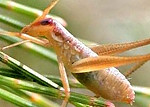
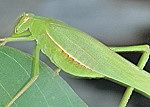 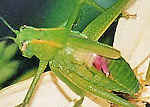

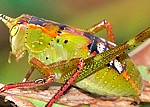
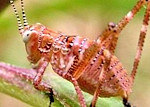

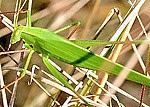
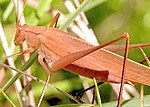
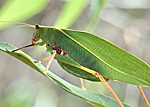
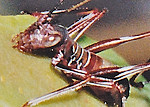
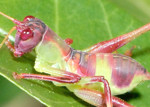
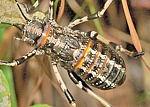
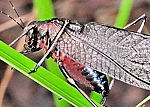
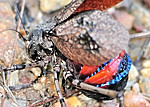 -
- Family GRYLLIDAE - True Crickets
The True Crickets can be distinguished from others by presence of long ovipositor and long cerci
in females. They are nocturnally active. They live on the ground, can be found
in burrows, crack in soil or amongst leaf litter. Males produce complex love songs by rubbing wings together.
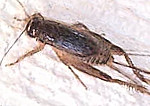
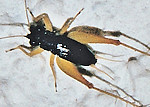
 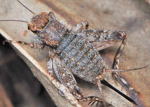
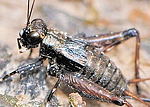

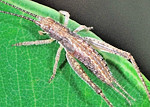
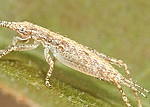
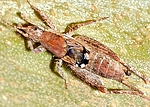 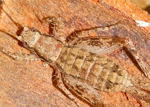
-
- Family GRYLLOTALPIDAE -
Mole Crickets
Mole Crickets have characteristic digging forelegs. Males produce songs and build burrows to amplify
their love song. When dug up, they do not leap away like other
burrow-inhabiting insects but dig their way back underground with powerful strokes of the forelegs. The dirt is simply forced
aside. Their antennae are relatively short.

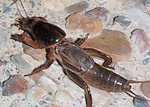
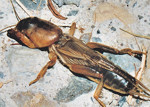 -
- Reference:
- 1. Insects
of Australia, CSIRO, Division of Entomology, Melbourne University
Press, 2nd Edition 1991, pp 369.
- 2. Insects of Australia and New Zealand - R. J. Tillyard, Angus
& Robertson, Ltd, Sydney, 1926, p94.
- 3. Northern
Territory Insects, A Comprehensive Guide CD - Graham Brown, 2009.
- 4. A Guide to the Katydids of Australia - David Rentz, CSIRO PUBLISHING, June 2010.
Back to top
[ Field Guide ] [ Biology ] [ Questions for Discussion ] [ GRYLLACRIDIDAE ] [ TETTIGONIIDAE ] [ GRYLLIDAE ] [ GRYLLOTALPIDAE ] [ Unidentified Katydids ] | |
|

























































